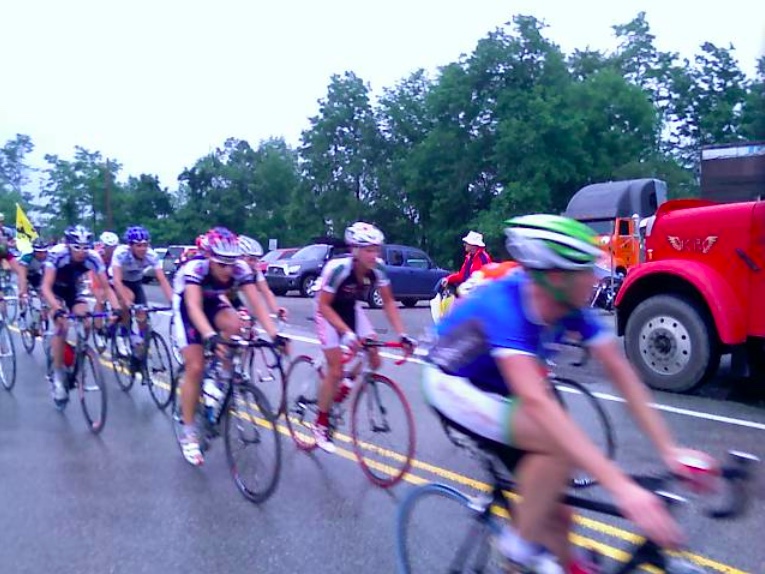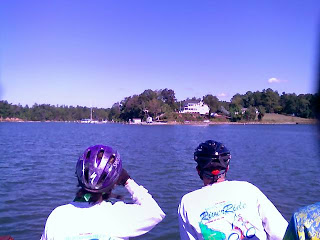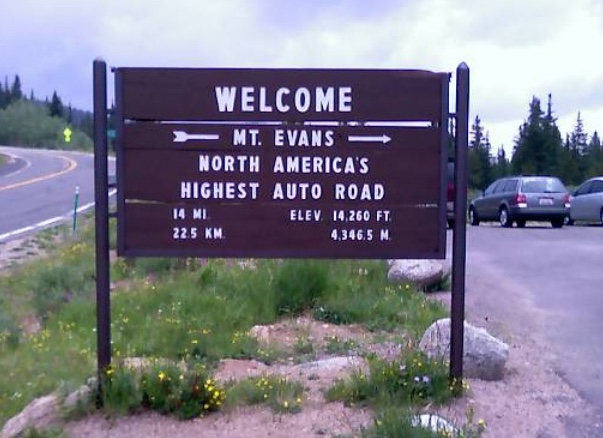LIGONIER, PENNSYLVANIA

Stage 5: Ligonier to Pittsburgh (Saturday, June 28, 2008)
(Start time: 12 noon) This 83-mile stage will give the riders a more subdued ride as they enter into downtown Pittsburgh. The route will follow a mostly rolling course with one short KOM at mile 21 and one last intermediate sprint at mile 38 on the outskirts of Latrobe. The race will continue towards Pittsburgh with a sprint finish at the headquarters of title sponsor American Eagle Outfitters. Spectators should be prepared for a thrilling, four-corner downtown sprint finish.
I rode early in the morning and then went to the Diamond at 10:00 a.m. Dave “Lumpy” Williams thanked the volunteers and “without insulting the volunteers who came from other towns” opined that Ligonier was the prettiest town on the tour. I would agree. When Lumpy welcomed us he deadpanned the title, “The American Eagle Outfitters’ Tour of Pennsylvania presented by Highmark Healthy High 5,” stopping to raise his hand in the air to simulate giving a “High 5.”
Whereas in Bedford the volunteers were assigned to a location in town, this race was to start by the Fort just below the Diamond then head out of town on Rte 711. All our assignments were out 711 all the way to Donegal. I knew the location I wanted was the intersection with Darlington Road but when it was offered as the “unmarked four-way intersection” everyone just looked at each other then one person said he would find it. Only later did I realize which intersection it was – the one I wanted.
Still, it all worked out. I got to bike out past Stahlstown to Fort Hill Road, 10 miles exactly, mostly uphill. As I rode some locals thought I was leading the race and were cheering for me. But when asked I always stopped and told them what real racers looked like. “Young,” I told them.
I reached Fort Hill Road and rested my bike against a sign. There was a young mother, no older than 30, on an ATV with two small kids in a field across the road. I went to talk with them and told them how exciting it was to watch a race, especially with all the police cars and motorcycles. I was able to explain to them what they would see. Basically, a parade of cars, led out by state policemen, would be coming up the road. Media. Race referee. Then riders followed by team cars, doctor or ambulance, and the dreaded broom wagon.
Since we were at the bottom of a hill, the racers flew by in a matter of 3-4 seconds. And that was it. Pretty exciting, no?
I said goodbye, the family thanked me for explaining to them what the bike race was, and I headed back to Ligonier. As I left I saw the road was blocked and an ambulance was tending to someone in the ditch. The “broom wagon” had gone by with the caravan but had doubled back so we know some rider was done for the tour.
(Two riders, Alex Welch and Nathaniel English, were listed as Did Not Finish on this stage. Likely it was one of them.)
This morning I arrived in Ligonier and parked in front of my brother’s house although he was out of town. I rode back down to Carey School Road and climbed it again. It is steep and was a good climb for me. Again, like yesterday, my descent was 45 mph. I did a loop around the west end of town and then cut through the school parking lot again back to Carey School Road. This time when I reached the top I pedaled full out. I reached 46.5 mph which was a personal best on my bike.
I went to the Diamond at 10:00 a.m. to meet up with all the volunteers. Assignments were handed out and at first, I was disappointed it was so far out (10 miles) but I knew it gave me a chance to bike and not drive. It was mostly uphill out to Stahlstown which gave me a chance to pass my fellow volunteers who had been stationed at every intersection along Rte 711 and had driven to their assignments.
My return to Ligonier could have been a 10-mile run-in on Rte 711 but when I came to Darlington Road to Rector I decided to go down the road I went up the day before. The road is scary steep.
It was 1970 or 1971 that my brother, Brad, was on this hill on his bike. I can’t imagine that he was far up the road because no one would venture that high. But he was on a bike, just 10 or 11 years old, and on his descent, he hit some gravel at the bottom of the hill where the bridge crosses Loyalhanna Creek and crashed hard. He chipped a front tooth and was generally messed up.
This was in the back of my mind as to whether I even wanted to go down this road, let alone fly down this road. I approached the top of the hill, which is flat, with trepidation. I looked behind me and a car was coming up on me. My thought turned to the car as to whether or not he would try to pass on this narrow country road that went straight down. That would be no problem.
I pedaled, though not hard at first. My speed went from 20 to 25 and then to 30. I looked back and the car was farther back. My speed was 35 then 40. I was headed down and was pedaling even harder. The speed was 45 then 46.5. I last saw it at 49 but couldn’t risk looking at the speedometer. I had to watch the road and worry about the bridge where Brad wiped out.
I finally just got in a tuck and let it roll. This was a combination of adrenaline rush and excitement mixed with pure terror. In other words, it was great! I flew across the bridge and as I was rolling on a slight uphill, looked down to view my high speed. It was 49.8. I guess I can round it to 50 mph! (I didn’t.) That was a personal best.
I then casually rode Rte 381 back to Rte 30 then took Old Rte 30 back into town. I wasn’t sure if or where to ride next.
I drove out Rte 30 headed back to my parents in Somerset and came to Laughlingtown. And I thought, “Why not?”
I parked and got my bike out and decided I would ride up Laurel Mountain from Laughlintown. The distance to the summit is 3.5 miles and the signs at the top warn of an 8% descent. I hadn’t biked far this day, only 20-25 miles, but wondered how my legs would be on a 4-mile climb. Basically, they did fine. I made it with no problems and no stopping.
I was disappointed in my descent. My speed was only 40-45 mph which was the posted speed limit. I bet the Tour riders on Friday were 10 mph faster.
As far as the race:
The American Eagle Outfitters Tour of Pennsylvania presented by Highmark Healthy High 5 neared its end as the international U25 field entered onto the Pittsburgh streets in the race’s penultimate stage five. The peloton began what was considered an early sprint in pursuit of a break of six riders that cleared the peloton mid-race. The finishing circuits showcased Pittsburgh’s newly built shopping district before an exciting finish outside of the American Eagle Outfitters world headquarters. The pair of French-Canadians, David Veilleux and Keven LaCombe (Kelley Benefit Strategies-Medifast), shocked the Pittsburgh crowds when they emerged out of the final bend with a sizeable lead over one remaining rider from the original breakaway, American Phil Gaimon (Fiordifrutta). “It feels great to have the leaders jersey and this was our plan since our meeting in the morning,” admitted stage winner, Overall Race leader and Best Sprinter leader, David Veilleux. “We planned to have Keven and I jump together and surprise everyone in the last part of the circuits.” Both Veilleux and LaCombe crossed the victory line together, applauding one another for their cagey tactics that moved Veilleux into the American Eagle Outfitters yellow leaders jersey, two seconds ahead of the previous leader from South Africa, Christoff Van Heerden (Konica Minolta) and American Stefano Barberi (Z-Team). The 91-mile stage gave the international U-25 field a more subdued ride as they entered into the City of Pittsburgh.
The route followed a mostly rolling course with one short VisitPA.com KOM around mile 22, made obsolete by the event’s leading climber from Boulder, Colo., Peter Stetina (VMG-Felt) who solidified his lead of the climber’s competition during the previous stage. The early miles also presented the sprinter with one last intermediate hot spot at mile 37, on the outskirts of Latrobe. American Chance Nobel (California Giant Berry Farms) scooped up the full points during his solo breakaway that gained nearly two minutes on the field. A second breakaway of three riders let loose on the second half of the stage to include Australian Forbes Trail Most Aggressive Rider Dylan Newell (Praties), the Belgian Steven Van Vooren (Johan Brunyeel Cycling Academy) and South African Travis Allen (Konica Minolta). The trio was later joined by three more Americans, Sheldon Deeny (Sakonnet Technology), Caleb Fairly (VMG) and third place in today’s stage, Phil Gaimon. “It was pretty tough out there with really strong headwinds,” said Newell. “I thought they would let us hang out there for a while, but I didn’t think it would stay away until the last lap of the finishing circuits.”

Knowing how steep Darlington Road is was important to me. So I wrote to a local bike shop, Speedgoat Bicycles in Laughlintown, Pa. I never shopped there and they certainly didn’t owe me a response but I got one — a great one. I will definitely stop there the next time I’m back in Ligonier Valley.
While we certainly have much steeper climbs in the neighborhood (I tend to rate them according to how close my tongue is to the road immediately in front of my face), Darlington up to 711 is only considered “steep.” This is worse than “not steep” but not nearly as bad as “pretty steep,” “real steep,” “damn steep,” and our peculiar regional Hors Category col nomenclature, “sucks.”
I’ve also towed my twins up that road with standard road gearing, and I can quickly think of five climbs also within ten miles of the shop that I’d definitely not try that on. So it’s probably not too bad, though I don’t have hard numeric data for you. We have good customers who’ve done the Mt. Washington race/ride multiple times, and it appears that the length is also a major factor. The very, very bottom section of Darlington road probably does spike over 15%, and then it wanders back and forth under that initial grade.
Apparently, Mt. Washington would be like going up that thing repeatedly for seven-and-a-half miles. With oxygen depletion, fog, and freezing temperatures waiting at the top. Depressing, but hopefully helpful, too. That Mt. Washington climb is “brutal.”
Using my Garmin Edge 705 GPS, I later measured Darlington Road at 10-11% grade. However, turn off and head up Country Club Road and that goes at 12%.























